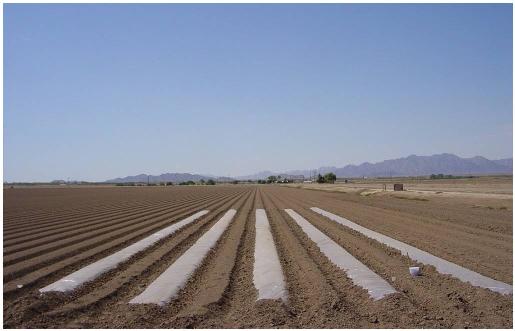 |
|
|
|

|
|||
| |
|||
Solar radiation brings about thermal, chemical and biological changes in soil covered by clear plastic film, particularly when the soil has a high moisture content. Thermal death studies have shown that at temperatures of 122°F or greater, a level often exceeded in the upper layers of soil during solarization, survival of many plant pathogens is limited to a few hours or less. Exposure to lower temperatures ranging from 98 to122°F for 2 to 5 weeks also can significantly reduce the population of many soilborne plant pathogenic fungi, fungus-like organisms, bacteria, nematodes, weeds and weed seed. Soil solarization has been shown to significantly reduce the incidence of Fusarium wilt on lettuce in southwestern Arizona. Soil Solarization Experiment To contact Mike Matheron go to: matheron@ag.arizona.edu.
|
|||
| Back | |||
For questions or comments on any of the topics please contact Marco Pena at the Yuma Agricultural Center. |
|||
| Home | Cotton
| Veggies | Forages
| Grains | Citrus
| Crop x Crop Insects | Diseases| Weeds | Pesticides | Economics | News | Weather | Research | Photos | Contacts | General Info. Copyright © 2001 University of Arizona, College of Agriculture and Life Sciences Webmaster: Al Fournier (acis@ag.arizona.edu) |
|||
